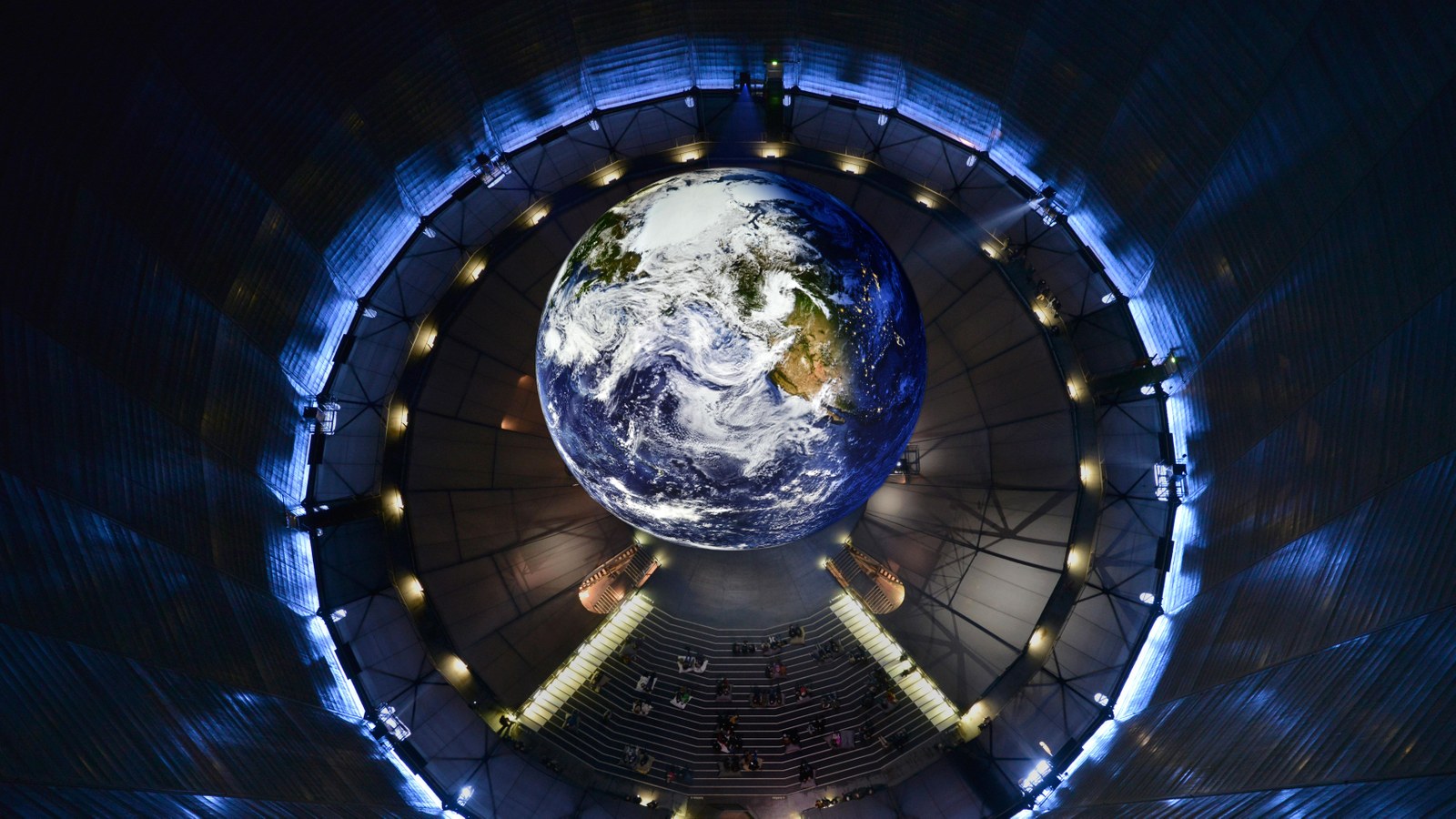Extension of an 'earthly' Earth from space experience


Over 500,000 visitors to the 'Wonders of Nature' exhibition at the Gasometer Oberhausen
With a diameter of 20 metres, Earth appears to float above visitors to the Gasometer Oberhausen, while banks of clouds, days and nights – and even rain showers – flow across its surface. Over half a million people have already visited the 'Wonders of Nature' exhibition, making this display in the old industrial monument one of this year's most popular exhibitions. "People are fascinated by the opportunity to gaze at the Earth," says Nils Sparwasser from the German Aerospace Center (Deutsches Zentrum für Luft- und Raumfahrt; DLR). Together with his team, he used satellite images to produce the animation that is projected onto the 20-metre diameter globe in the Gasometer. "And when visitors to the Gasometer Oberhausen look at the artificial world, they see one thing above all else: scientific data acquired by Earth observation satellites that helps us understand and preserve the wonders of nature." Originally scheduled to conclude on 30 December 2016, the exhibition has now been extended by almost one year to 30 November 2017.
Inside the Gasometer, 150 large-format images by internationally renowned nature photographers and numerous awe-inspiring film sequences shed light on the creative force of life. They relate the extraordinarily sensorial abilities and ingenious strategies at play in the fight for life, presenting sexual rituals, social relationships and the coexistence of species. "The success of the exhibit demonstrates just how fascinated human beings are by life – with all its intelligence and diversity – and how worthy of preservation these wondrously inventive biological systems are, whether large or small," says Peter Pachnicke, curator of the exhibition.

Produktion der Erdskulptur für die Ausstellung "Wunder der Natur"
Your consent to the storage of data ('cookies') is required for the playback of this video on Youtube.com. You can view and change your current data storage settings at any time under privacy.
DLR
An astronaut's view of the globe
The exhibition's highlight is a hovering Earth, a globe suspended in the 100-metre vault of the Gasometer, where it is used as a screen for 12 projectors. Visitors can take the lift to the lofty heights of the industrial monument for an astronaut's perspective, to gaze down on the entire surface of the Earth drifting far away. DLR scientists from the Earth Observation Center took datasets acquired by a variety of satellites to create an animation with a resolution of 58 million pixels. In total, the computers ran non-stop for 115 days to calculate this 3D image of the Earth, transforming the data acquired from space into information that provides visitors with an instructive experience of our home planet. "Satellites quite simply see more than the human eye. They operate in wavelength ranges invisible to us," says Sparwasser.
